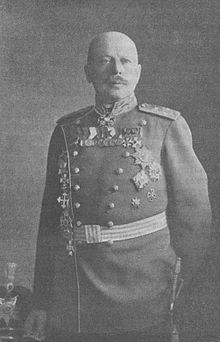Andrei_Zayonchkovski
Andrei Medardovich Zayonchkovsky (Russian: Андре́й Меда́рдович Зайончко́вский) (20 December [O.S. 8 December] 1862 – 22 March 1926) commanded the defence of the Romanian-Bulgarian border in Dobruja upon Romania's entry into World War I in August 1916.
This article needs additional citations for verification. (February 2013) |
